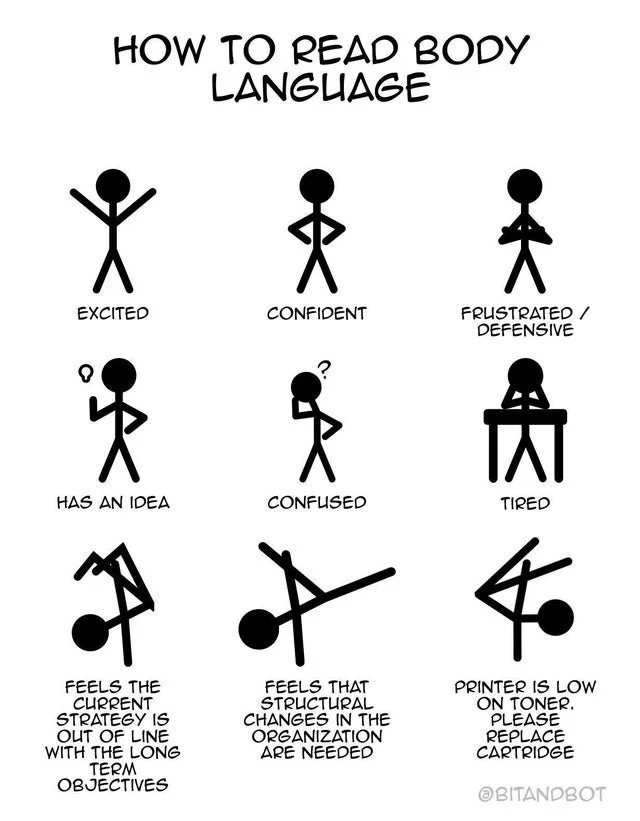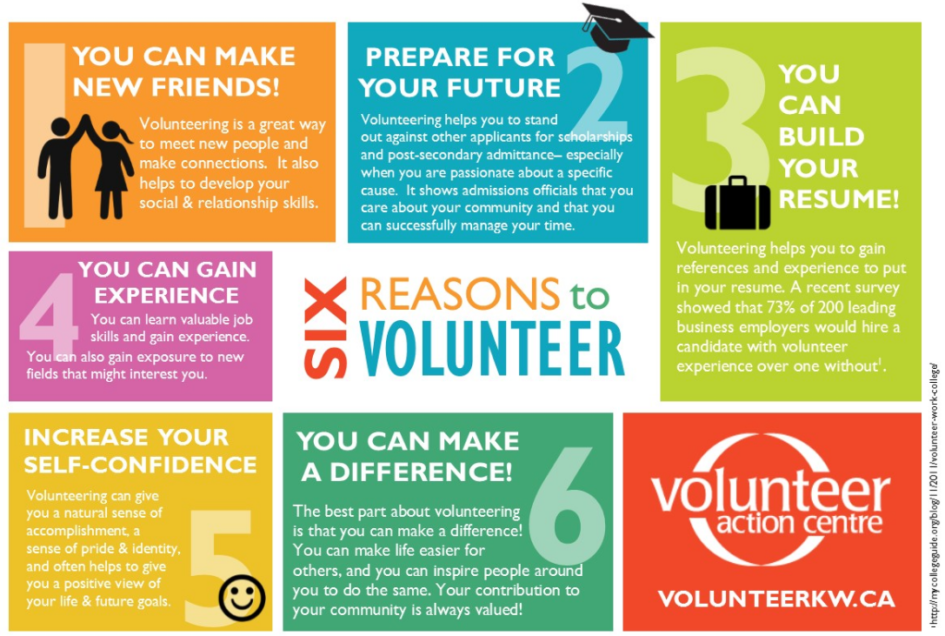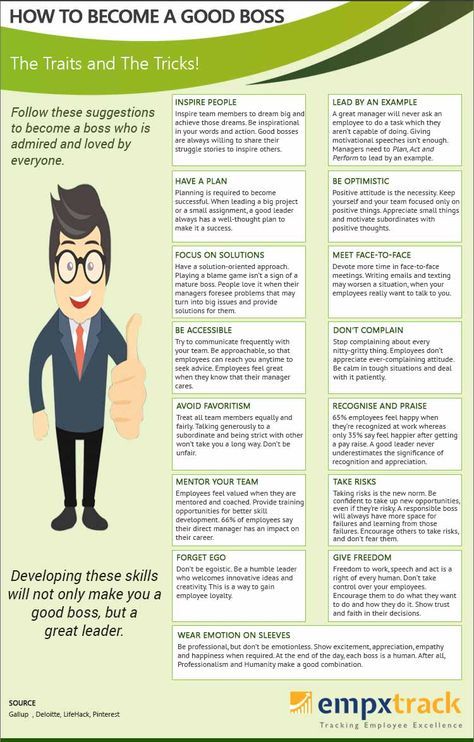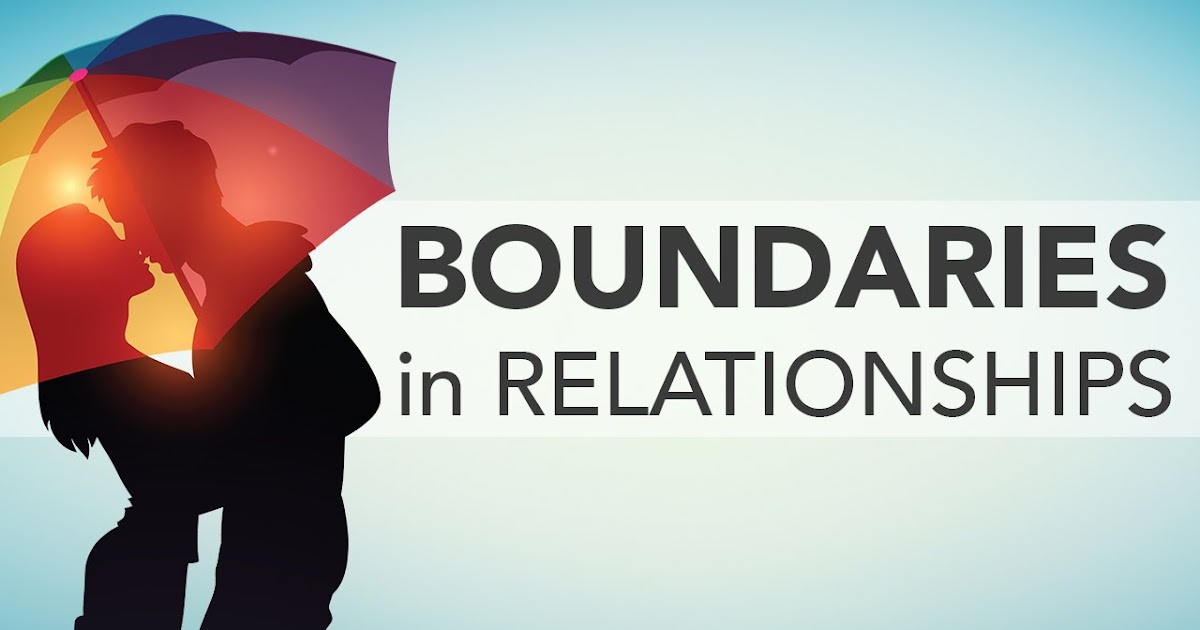How improve body language
7 Ways to Improve Body Language
Think back to the last time you felt like someone didn’t like you. What was it about the interaction that made you feel that way? Did they actually tell you they didn’t like you, or did their body language make you think that?
The thing is, that person might actually think you’re great. He or she may have no idea that you feel like you got the cold shoulder. And if it’s happening to them, does that mean you may be giving off the wrong impression, too?
Related: Why Should You Have Good Posture?
Do you know what your body language is telling people?
Consider these seven simple ways you can improve your body language to make your communication more confident and friendly.
1. Point your feet
If your goal is to have open communication and connection with someone, point your feet toward them. Although we don’t notice ourselves doing it, we pay attention to where someone’s else’s feet point, because it shows which direction they want to go. If your feet are pointing away from the individual you’re conversing with, it can feel like you’re looking for an escape.
2. Uncross your arms
It’s so natural to cross your arms when talking, but it puts off a defensive air. We cross our arms when we feel uneasy, because our body wants to protect our vital organs. Leave your arms loosely at your side and the conversation will feel more open and welcoming.
3. Notice what the other person’s body is doing
When we’re engaged in comfortable, natural conversation, our body tends to mirror the actions of the person we are with. You can pay attention and subtly mirror the other person’s body language to help ease into that natural flow of conversation.
4. Eye contact
Looking into people’s eyes can be awkward, because it’s a somewhat intimate action, but that’s why it’s so important. You show someone you are interested in what they’re saying by keeping that eye contact. Eyes give away a lot of information, so it’s also important to make eye contact to better understand what’s trying to be communicated.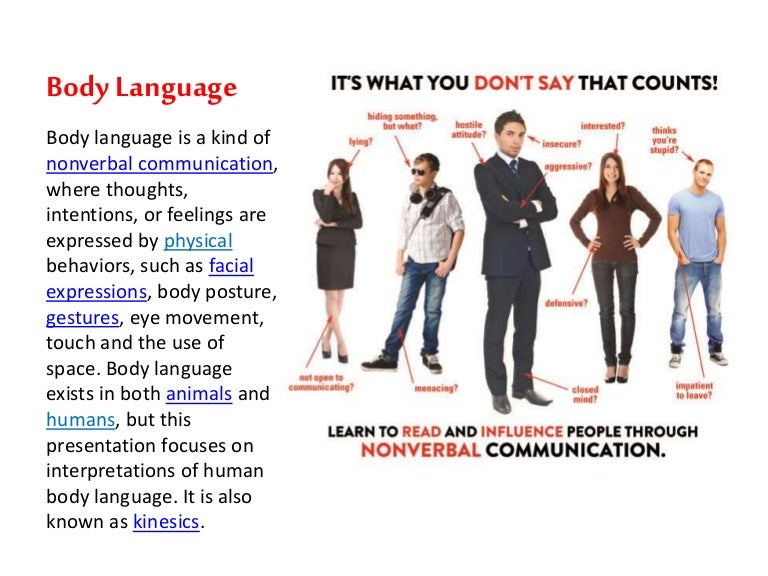
5. Loosen your shoulders
If you’ve got your shoulders scrunched up by your ears, it makes you look tense. This usually makes those around you feel tense as well. If you can’t calm down and loosen up, try gently massaging the back of your neck. It can help lower your heart rate and soothe your nerves.
6. Watch out for your fidgeting
We all do it. If you’re mindful of your fidgeting, you can usually control it, but if it’s just not working, try clasping your hands together, one on top of the other and pushing your thumb into the palm of your other hand. This allows you to release nervous energy, but isn’t as noticeable to those talking to you.
Related: Nervous Habits That May Be Affecting Your Health
7. Put your phone away
Snubbing someone for your phone is all too common. You can’t glance at your text message while in the middle of a conversation and still be completely focused on that individual. This is one of the most distracting things you can do, and it sends a clear message that you aren’t that interested in what’s happening right in front of you. It’s not fun to be phubbed by someone, so try to keep your phone away while talking to others.
It’s not fun to be phubbed by someone, so try to keep your phone away while talking to others.
It’s funny how such small things can make a huge difference in a conversation. Pay attention to what your body language is saying the next time you are with someone and you’ll have better control over what message you are sending.
SelectHealth may link to other websites for your convenience. SelectHealth does not expressly or implicitly recommend or endorse the views, opinions, specific services, or products referenced at other websites linked to the SelectHealth site, unless explicitly stated.
The content presented here is for your information only. It is not a substitute for professional medical advice, and it should not be used to diagnose or treat a health problem or disease. Please consult your healthcare provider if you have any questions or concerns.
16 Ways to Improve Your Body Language
Photo: Bigstock
Wise Bread Picks
What you say is only the tip of the iceberg of communication. The rest lies in your body language: how you hold yourself, your mannerisms, conduct, and even how you breathe. With a little conscious effort to improve your body language, you stand a better chance of scoring that job, that date, or simply being seen as the engaging and genuine person that you are. (See also: 7 Ways to be the Life of Every Party)
The rest lies in your body language: how you hold yourself, your mannerisms, conduct, and even how you breathe. With a little conscious effort to improve your body language, you stand a better chance of scoring that job, that date, or simply being seen as the engaging and genuine person that you are. (See also: 7 Ways to be the Life of Every Party)
What Is Body Language?
Body language includes more than just the slouch-factor or where you put your hands. In fact, it includes facial expressions, proximity to others, body position, habits, eye gestures, how we touch ourselves and others, how we interact with what we touch (i.e., fiddling), and even breathing.
Conscious or Subconscious?
Many of our mannerisms are subconscious, and we also read other people's mannerisms subconsciously. In fact, in the first two minutes of meeting somebody, your chances of remembering their name is slim, because your subconscious mind is busy evaluating that person's body language and getting to know their personality that way.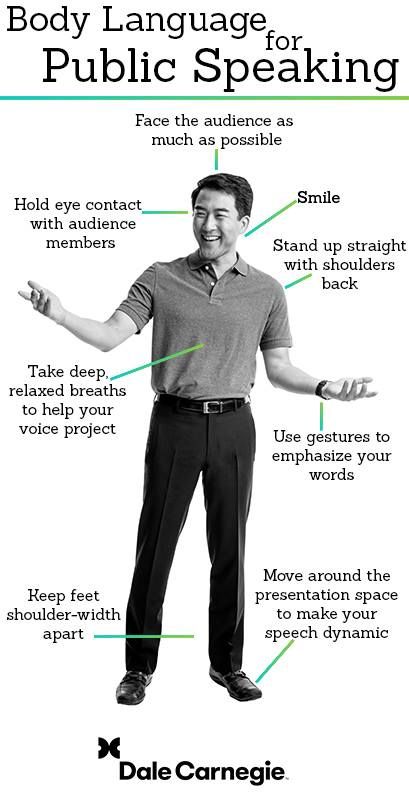 (So if you want somebody to remember your name, make sure you repeat it after the first two minutes of conversation; it drastically improves their chances.)
(So if you want somebody to remember your name, make sure you repeat it after the first two minutes of conversation; it drastically improves their chances.)
But body language — specifically our control over it — can also be quite conscious. By identifying the habits you have that don't serve you well and adopting new habits that increase the engagement factor with other people, you can consciously improve your body language — and hence your communication skills. At first some of the techniques in this article might seem awkward or forced, but most often it's only you who feels that way, since you're changing an ingrained habit. Keep it up, and you'll be naturally socializing like a star in no time.
Body Language Caveats
Before we get into the specific methods of improving your body language, remember that no one gesture is universal. Although crossed arms can signal a communication blockage, it could also be necessary for warmth or simply a comfortable way to hold your arms.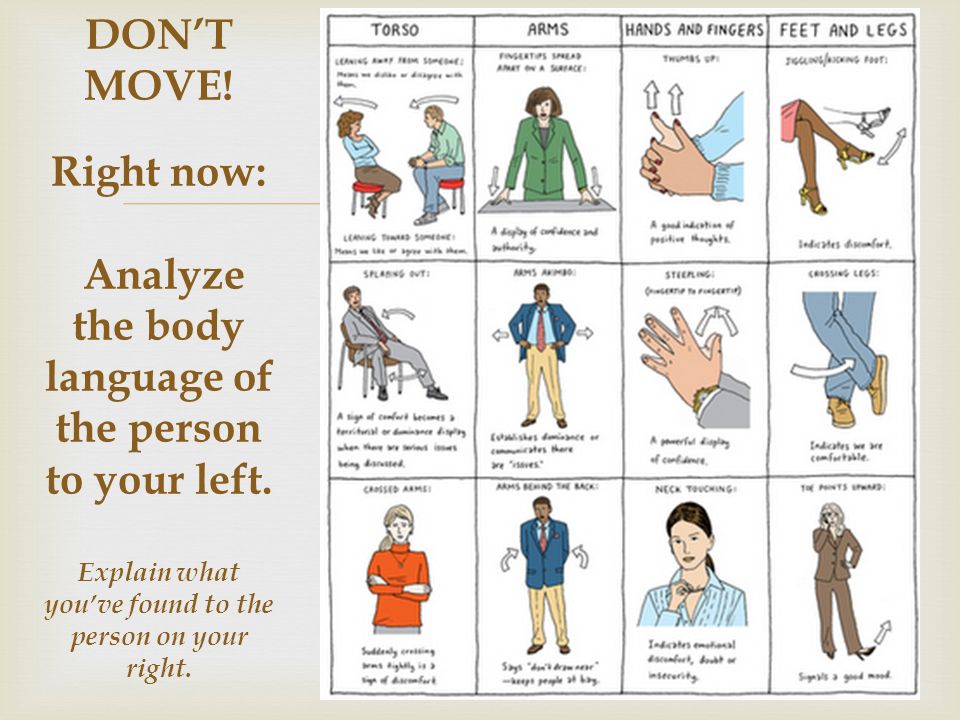 Rubbing your eyes could signify frustration, or it could just mean you're tired or have an itch. Try not to read into body language (yours or others') too much or too literally.
Rubbing your eyes could signify frustration, or it could just mean you're tired or have an itch. Try not to read into body language (yours or others') too much or too literally.
Culture also plays a part in body language. Some cultures respect personal space more than others, so proximity guidelines would be different depending on who you are dealing with. Other cultures view eye contact as a threat and lack of respect, and not the sign of confidence that many Western cultures view it as.
16 Ways to Improve Body Language
Here are 16 ways to understand and improve your own body language.
1. Be Aware
The first step to body language improvement is awareness. Start to pay attention to everything you do, and when you do it. The other day, I noticed I play with my earring when talking to certain people or about certain topics; with that realization I can better understand why I do it and what it means. Awareness is half the battle.
2. Study Others
Look at other people — especially people you admire.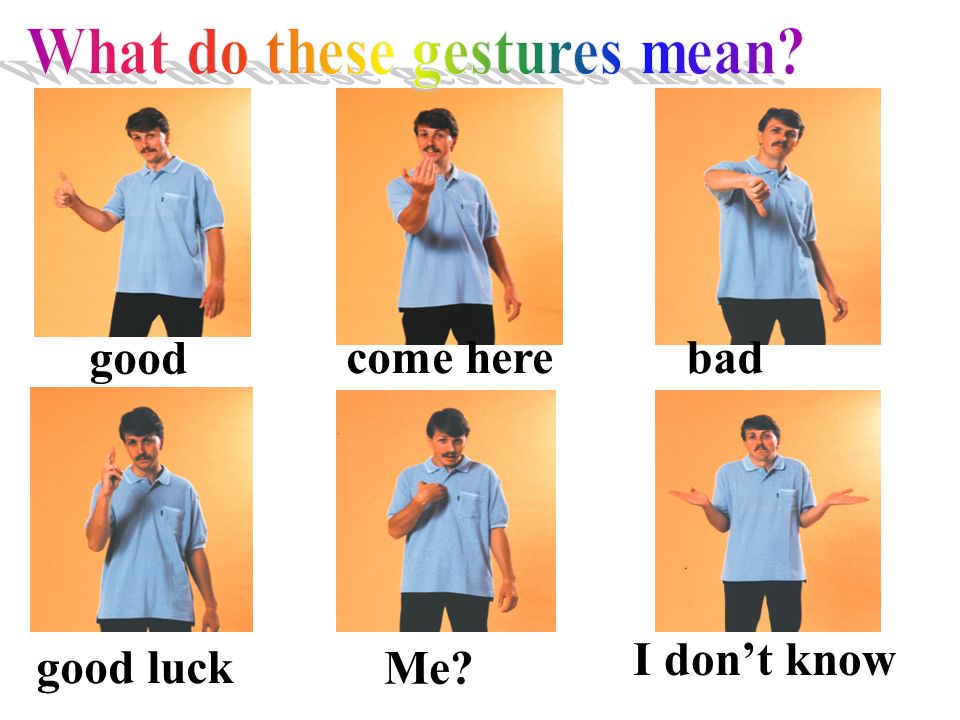 How do they hold themselves? What can you learn from them?
How do they hold themselves? What can you learn from them?
3. Mirror the Other Person
If you are sitting or standing opposite somebody, mirror their body positions, match their tone, and carry the same pace of conversation. Don't do it in an obvious or unnatural fashion. Even subtle mirroring can create a synergy and connection, and after a while you'll both be doing it naturally — you won't even know who is following who!
4. Be Aware of How You Cross Your Arms and Legs
Many people find crossing arms or legs comfortable, so it's no use to say you can't do it. If you want to cross your legs, that's okay; just be aware of the direction your cross them in, and make sure you cross towards your conversation partner. Beware: crossing your legs in a "figure four" fashion with your ankle resting on your knee can be seen as being stubborn or arrogant.
Also, be aware of other ways of creating crosses with your body; women often grab their opposite shoulder or elbow, or people hold a drink on the table using the opposite hand: these are signs of a lack of confidence or closing your body (and mind) to the conversation.
5. Make Eye Contact
Eyes are windows to the soul, and what you do with them communicates a lot. Be sensitive to cultures that eschew eye contact with elders or strangers; otherwise don't be afraid to look somebody in the eye. Not only will you say a lot by doing so, but you might also learn a lot.
6. Relax Your Shoulders
Holding your shoulders by your ears is a sign of tension, and stands to put your conversation partner on edge as well.
7. Don't Slouch
Although sitting ram-rod straight might be a forced exaggeration, make sure you're not slouching. Your back — and social life — will benefit.
8. Face Your Conversation Partner
Similar to crossing arms and legs, not facing your conversation partner is a sign of distraction or disinterest. You'll increase engagement by facing your partner, and...
9. Lean In
Have you ever had a conversation that you're both really enthusiastic about? You'll probably notice you both are lively, and leaning in towards each other.
10. Mind Your Fidgeting
I'm a sucker for playing with my drink, or straw, an earring, or a bottle cap — with what I affectionately refer to as a "tactile fixation." But it can be a sign of nervousness and, at the very least, a distraction for others.
Also watch out for touching your face or running your hands through your hair.
11. Don't Tilt Your Head (Too Much)
Although a slight tilt of your head can indicate interest, too much of a head tilt (women are the main culprits for this) indicates submissiveness.
12. Don't End Sentences with Upswings
Although intonation isn't quite body language, it warrants mentioning since it's part of the subconscious messages we communicate. Ending your sentences like questions indicates a lack of confidence in what you're saying, which does nothing to instill others' confidence in you.
13. Go for a Firm or Matching Handshake
Don't squeeze the life out of your new acquaintance, but a nice firm handshake feels good.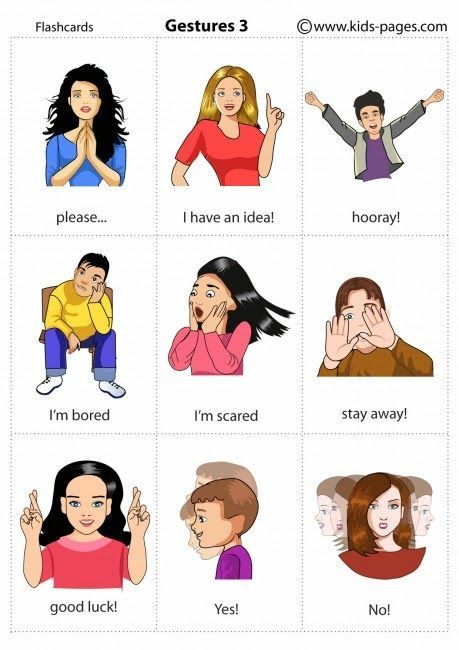 I tend to try to match my acquaintance's handshake (like mirroring) — except for wet fishes. I just can't do it.
I tend to try to match my acquaintance's handshake (like mirroring) — except for wet fishes. I just can't do it.
14. Know Where Your Hands Are
Holding your arms behind your back with your hands clasped is a sign of confidence. (It also provides you with something for your hands to do if you're a fidgeter! This is great for public speaking.)
Conversely, holding your hands in your pockets might be comfortable, but can also indicate boredom or over-confidence.
15. Sit in an Engaging Position
Unless you're star-crossed lovers gazing into one another's eyes, sitting directly opposite somebody indicates confrontation. It's even worse with a table or desk in between you, which creates a barrier. Instead, try to sit at a 45 degree angle. This provides comfort, space, and still allows you to mirror and engage.
16. Relax!
Now that you're probably hyper-aware of everything you do and don't do, take a deep breath and relax. Adjusting your body language might feel unnatural at first, so don't force it too much.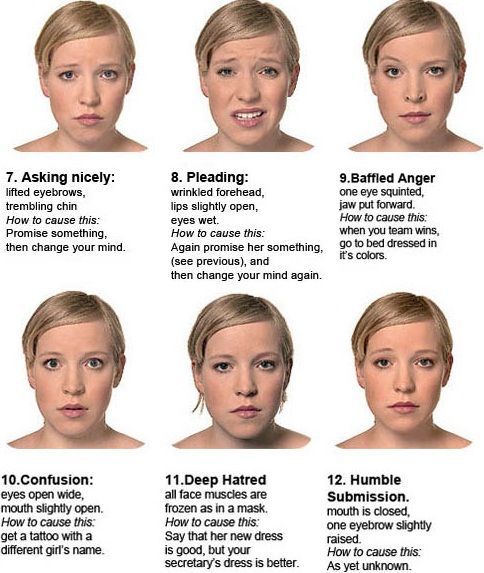 With a dose of awareness and applying these techniques gently over time, you'll communicate everything you want to with your words as well as your body.
With a dose of awareness and applying these techniques gently over time, you'll communicate everything you want to with your words as well as your body.
Found this article useful? Pin it!
Tagged: Career and Income, Personal Development, body language, communication, social skills
21 Steps to Improve Your Body Language
Success Ideas /
Success Secrets Body language is an aspect that most of us simply ignore. But it is the first criterion by which we are analyzed and evaluated by others. Body language includes mannerisms, facial expressions, the ability to control oneself, postures, and even breathing. In fact, the words we speak are just a drop in the ocean of communication. Everything else in a conversation with a person or group of people determines the language of our body.Here are a few steps to help you improve your body language and understand its importance.
Step 1: Do not cross your arms or legs
If you could look at yourself while communicating, you would notice your own mistakes.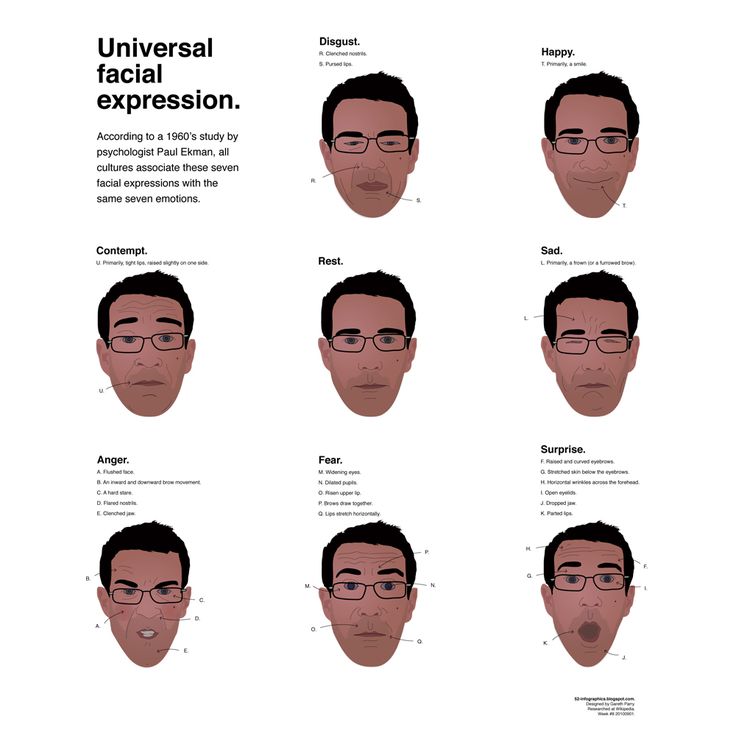 Some of you may have a habit of crossing your arms or legs when talking to other people. This gesture reflects badly on your confidence and is regarded as a defensive posture. The crossovers created on your body (if you grab the shoulder or elbow of the opposite arm) are a sign of a lack of trust. The best way to show friendliness and openness to other people is to speak with your arms loose and palms open. Trust me, you won't feel embarrassed by changing an existing habit. The feeling you get when talking calmly with someone should motivate you to radiate more happiness and inner freedom during the conversation.
Some of you may have a habit of crossing your arms or legs when talking to other people. This gesture reflects badly on your confidence and is regarded as a defensive posture. The crossovers created on your body (if you grab the shoulder or elbow of the opposite arm) are a sign of a lack of trust. The best way to show friendliness and openness to other people is to speak with your arms loose and palms open. Trust me, you won't feel embarrassed by changing an existing habit. The feeling you get when talking calmly with someone should motivate you to radiate more happiness and inner freedom during the conversation.
Step 2: Maintain eye contact
Our eyes play an important role in communication. This helps the other person feel more comfortable, as they can immediately understand your intentions, motives, and mood. Eye contact is also a means to get people interested in what you are talking about. A glance wandering in space creates the impression of boredom and disinterest in another person.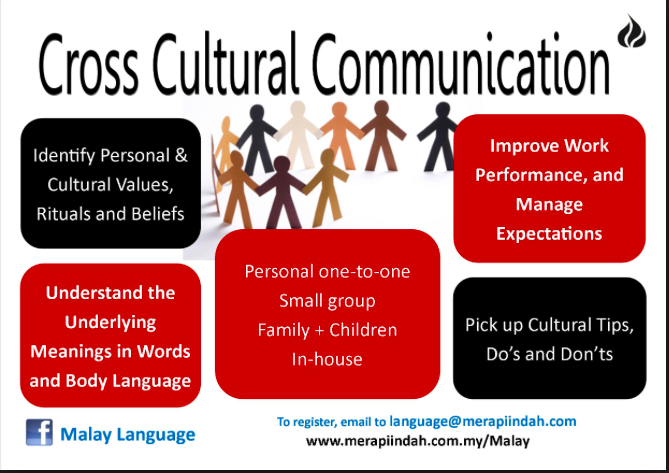 Remember that you must maintain eye contact, and not just make eye contact when talking.
Remember that you must maintain eye contact, and not just make eye contact when talking. Step 3: Mirroring
If you are talking to a person while sitting or standing in front of him, learn to mirror the other person. This means copying his tone, pace of conversation, and sometimes even facial expressions. For example: if someone tells you about an unpleasant incident and looks sad, it is important that your face at this moment of the conversation reflect sadness and grief. This gives the other person a sense of comfort and the realization that their feelings are understood. Closer relationships can be created through subtle mirroring, and this, over time, will become part of your natural conversational behavior.
Step 4: Relax
Your stiff, tense shoulders can tell you a lot of things during a conversation. They openly demonstrate that you feel uncomfortable next to this interlocutor, or do not agree with the opinion of another person. A relaxed body gives a feeling of lightness and comfort not only to yourself, but also to those around you.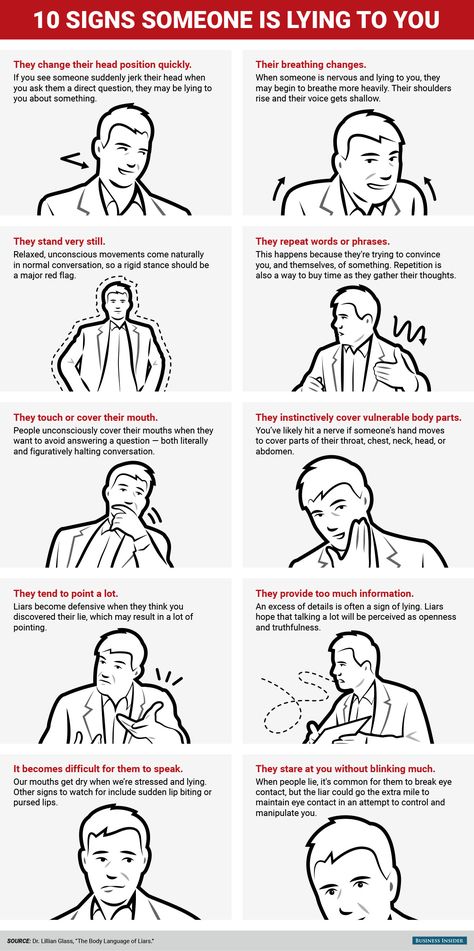 A conversation conducted with a calm mind and a relaxed body will always be more pleasant and forward-looking. So, take a deep breath, relax - and you will immediately understand the true essence of the conversation.
A conversation conducted with a calm mind and a relaxed body will always be more pleasant and forward-looking. So, take a deep breath, relax - and you will immediately understand the true essence of the conversation. Step 5: Smile and Laugh
If you think it's important to be serious and not smile when talking, you're in a completely dark world of communication. Smiling can make conversation easier and more alive. Laughter will help the interlocutor feel lighter and more at ease. A smile or a joke in a conversation can make you a more interesting conversationalist, and also makes people feel warm and comfortable during the conversation.
Step 6: Don't avoid gestures
Keeping hands in pockets may be convenient, but this is a clear sign of distrust of the interlocutor. This gives the impression that you are disinterested in the conversation or too arrogant. Other hand gestures help emphasize words and make phrases more meaningful and effective. Gesticulation gives the impression of your self-confidence and awareness of the topic of conversation.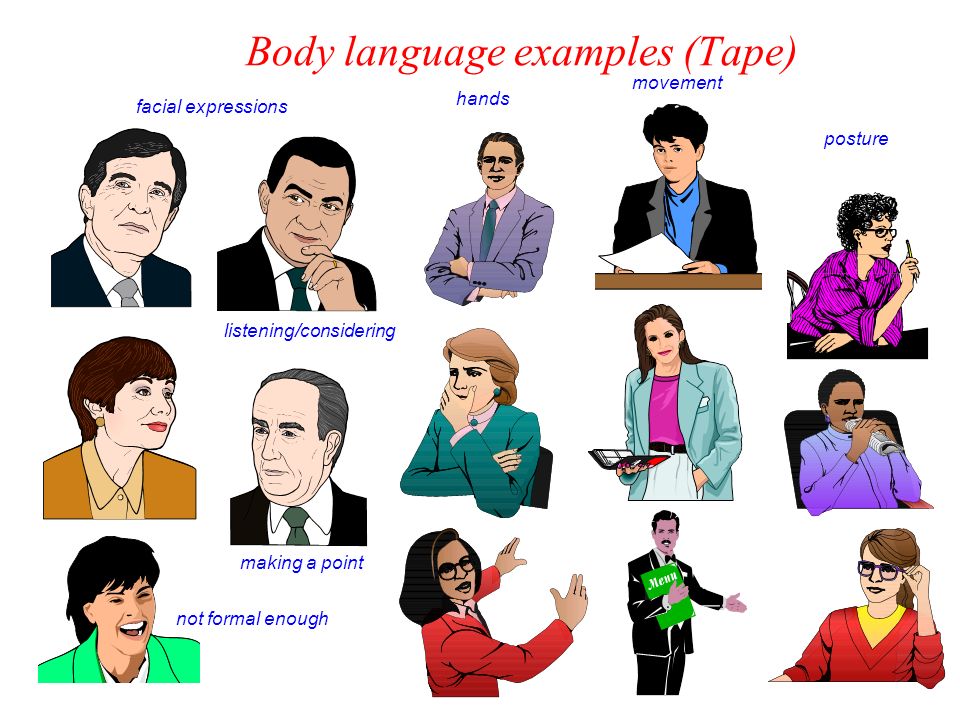
Step 7: Don't fuss
It's very common for people to get carried away in a conversation and start shaking their legs or tapping their fingers on the table. This is perceived very negatively during the conversation. You should avoid gestures that make you look nervous. The interlocutor may think that you are distracted from the conversation or are looking forward to its end. Try to stay calm and relaxed at all times. Controlling body movements can make conversation much more enjoyable.
Step 8: Maintain a slow pace
It is true that each person lives at their own pace. Walking fast and talking make you look nervous and restless, while walking slowly signifies calmness within you and self-confidence. Slow gestures add elegance to your body language. For example, when you're about to reply to someone, it's important to make sure you don't break your neck by turning sharply in their direction. Instead, slowly turn in their direction.Step 9: Nod your head
When you are talking to someone, how do you show the other person that you are interested in your conversation? Nodding your head is the easiest way to make someone feel like you can understand them.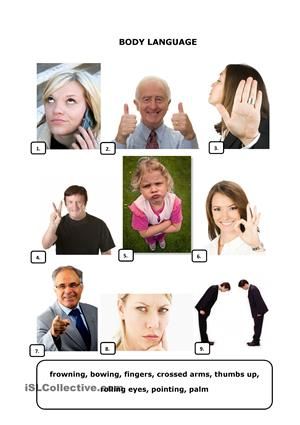 This is the most important sign of consent in terms of body language. Some conversations require more nods, especially if the other person just wants to be listened to. This does not mean that you should just shake your head monotonously. This gesture should show what a good listener you are.
This is the most important sign of consent in terms of body language. Some conversations require more nods, especially if the other person just wants to be listened to. This does not mean that you should just shake your head monotonously. This gesture should show what a good listener you are.
Step 10: Lean in towards the other person
Leaning in is an important part of body language. When you reach out to another person, they sense that you find the conversation interesting. But always control this gesture. By leaning forward too much, you can mislead the other person by unwittingly hinting at closer physical contact. At the same time, leaning back too much can make you look arrogant.Step 11: A firm handshake
A firm handshake shows that you are confident and enthusiastic about meeting the other person. It plays a key role in building trust between people, whether in a personal or business relationship. Remember, starting any acquaintance with a casual and purely symbolic handshake is a demonstration of a lack of confidence and good feelings towards another person.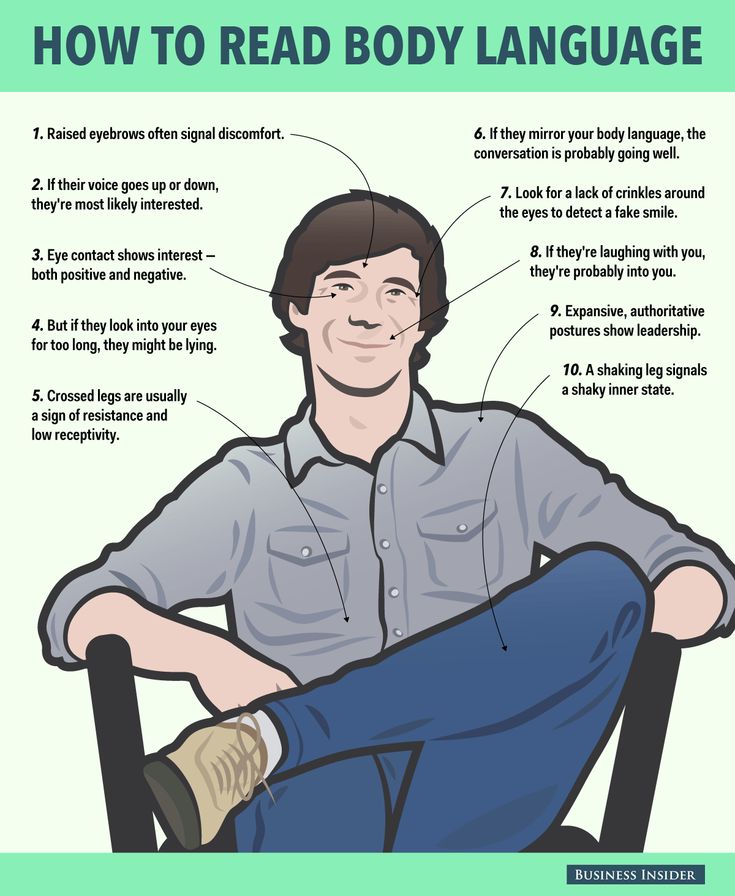 If you don't reach out to people at all, you may come across as unfriendly and arrogant.
If you don't reach out to people at all, you may come across as unfriendly and arrogant.
Step 12: Study Other People
When you start to change your own body language, you try to control yourself and pay little attention to other people. If you admire certain individuals and want to be like them, you are more likely to learn by watching them carefully. Also, if there are certain people you don't like, you should be on the lookout for repeating those gestures that make them repulsive. Thus, by studying others, you can bring about dramatic changes in your own body language.Step 13: Lower your voice and tone
People with a loud voice are often regarded as dominant. There are some places, like debates and speeches, where it is welcome, but in private conversation, a loud voice causes negative feelings. A pleasant quiet baritone always sounds friendly and will speak of you as a polite and balanced person. Just as our gestures determine the degree of trust and honesty, so the tone and volume of pronunciation demonstrate elegance and attractiveness.
Step 14: Don't Scratch Your Head
Scratching your head or running your fingers through your hair is a direct sign of carelessness and stupidity. A person who holds his hands over his head appears inattentive and uninterested in the conversation. Stop yourself every time your hand tries to reach your head. This will improve your self-confidence and help you feel more alert.Step 15: Don't bite your nails
Not only does biting your nails represent nervousness and a low level of confidence, but it's just bad manners. It demonstrates that you are confused in life and are not happy to see other people, listen and delve into their problems.
Step 16: Find a Comfortable Posture
A comfortable posture is essential to making any conversation enjoyable. Usually two talking people are separated either by space or some objects. You can try to sit not directly face to face, but turn 45 degrees. This makes the posture comfortable and provides space for effective communication.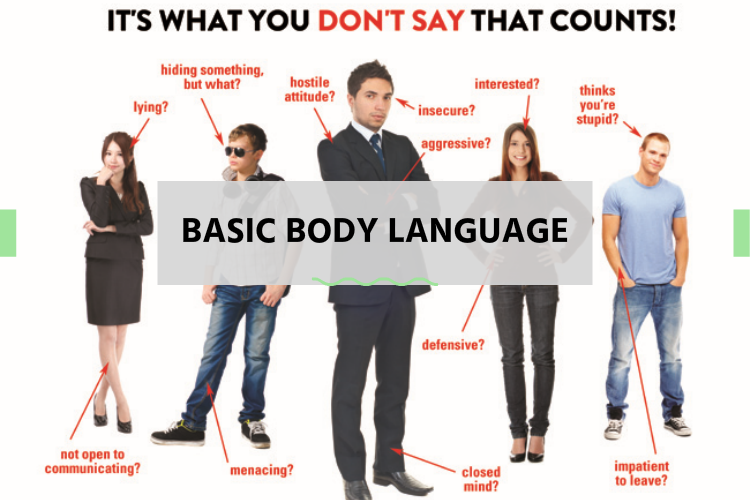
Step 17: Don't be dramatic
Don't act when talking or passing information. Whether it is a fact, an explanation, or an answer that forms a conversation, you should not overact and make exaggerated expressions or gestures. I don't think you can impress others by impersonating someone else. And never pretend to be smart, because there will always be people smarter than you.
Step 18: Don't touch your face often
Touching your face while talking is a sign of dishonesty. People usually do this when they are nervous or afraid of confrontation. They comfort themselves by placing a hand over their face. Many people do this unconsciously and consider it a normal gesture that does not interrupt the conversation. However, the interlocutor will be able to see your uncertainty hidden under your words, and will not trust what you are saying. Therefore, you must be careful and control your hands.Step 19: Trust Other People
It is important to trust the person you are talking to in order to have a fruitful conversation.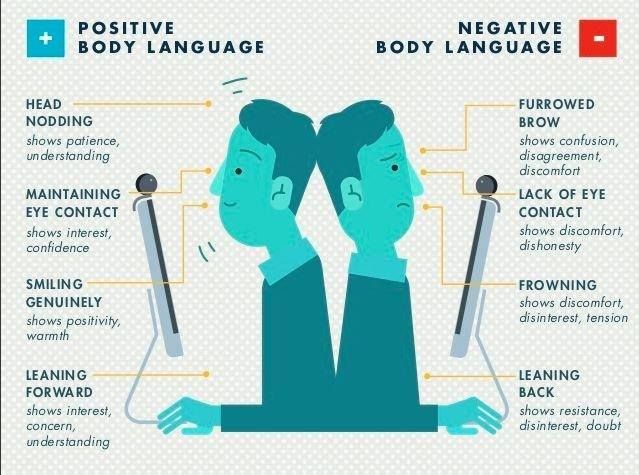 Without proper trust, you are unable to get any advice. You must first understand the other person's connection to you, whether it be a personal, business, or professional relationship. Based on mutual trust, your body language will show confidence and openness.
Without proper trust, you are unable to get any advice. You must first understand the other person's connection to you, whether it be a personal, business, or professional relationship. Based on mutual trust, your body language will show confidence and openness.
Step 20: Relax
Once you've learned how to improve your body language, you need to know when you're overdosing. Learn to relax and comfort yourself. The more comfortable you are, the easier it will be to adjust to the lessons to improve body language.Step 21: Observe yourself from the outside
Look at yourself from the outside, and you will understand what looks good and natural and what does not. For those who lack communication skills due to poor body language, start making new acquaintances. You will immediately see what you need to work on, and what turns out just fine.
Although there are no universal gestures and habits, we have tried to share with you the most common ones. In addition to the tips above, another one is to close your eyes and visualize your ideal behavior. It is self-observation that will help improve your body language in the first place. Happy changes!
It is self-observation that will help improve your body language in the first place. Happy changes!
Discuss Article
18 Ways to Improve Your Body Language
There are several common interpretations of body language and methods that are most often found to be most effective for body control.
Author Kluber To read 6 min. Views 4k. Posted by
First, in order to change your body language, you must be familiar with your body. Pay attention to how you sit, how you stand, how you use your arms and legs, what you do when you talk to someone.
You can practice in front of a mirror. This way you will get a better idea of how you look in the eyes of other people, and thus you will have the opportunity to practice a little before going out into the world.
Closing your eyes, imagine how you stand and sit confidently, calmly, without straining, when you communicate with someone.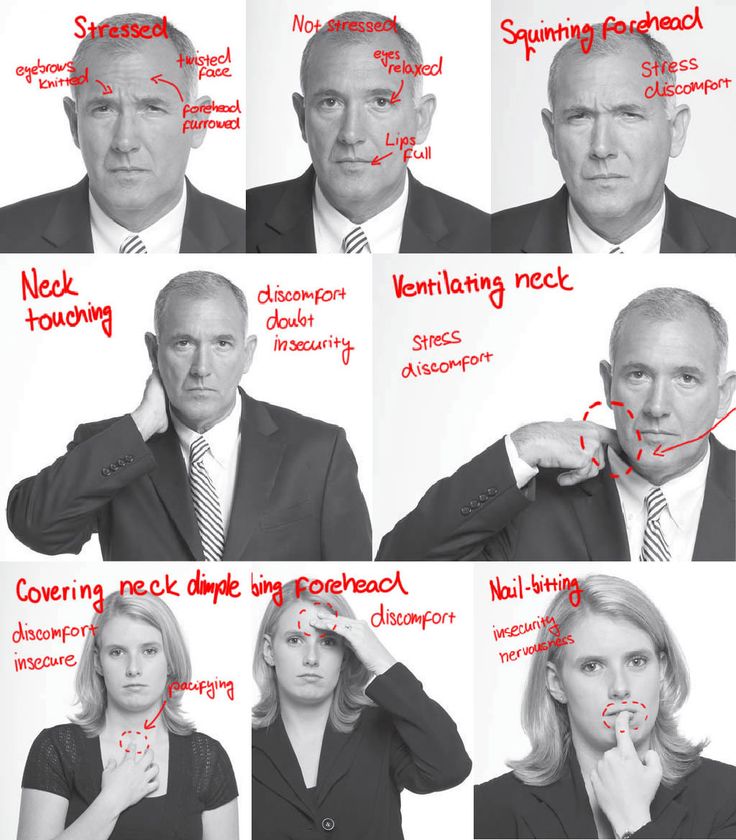 Imagine a version of yourself, and then practice being that.
Imagine a version of yourself, and then practice being that.
You can also look at friends, movie stars or anyone else who you think has beautiful gestures and make them a role model. Watch what these people do and never do. Assemble your mosaic from other people's gestures. Try to use these gestures yourself.
There is nothing wrong with that. People don't look at you as often as you think - they are more concerned with their own problems. In order to balance your movements, just have a little fun, practice and observe yourself.
Here are 18 general rules to improve your body language:
1. Don't cross your arms or legs.
Do not cross your arms, you get the impression that you want to close yourself off from others, to protect yourself. This also applies to your legs. Be open.
2. Make eye contact.
If you are talking to several people at once, maintain eye contact with everyone to create a connection and make sure you are being heard.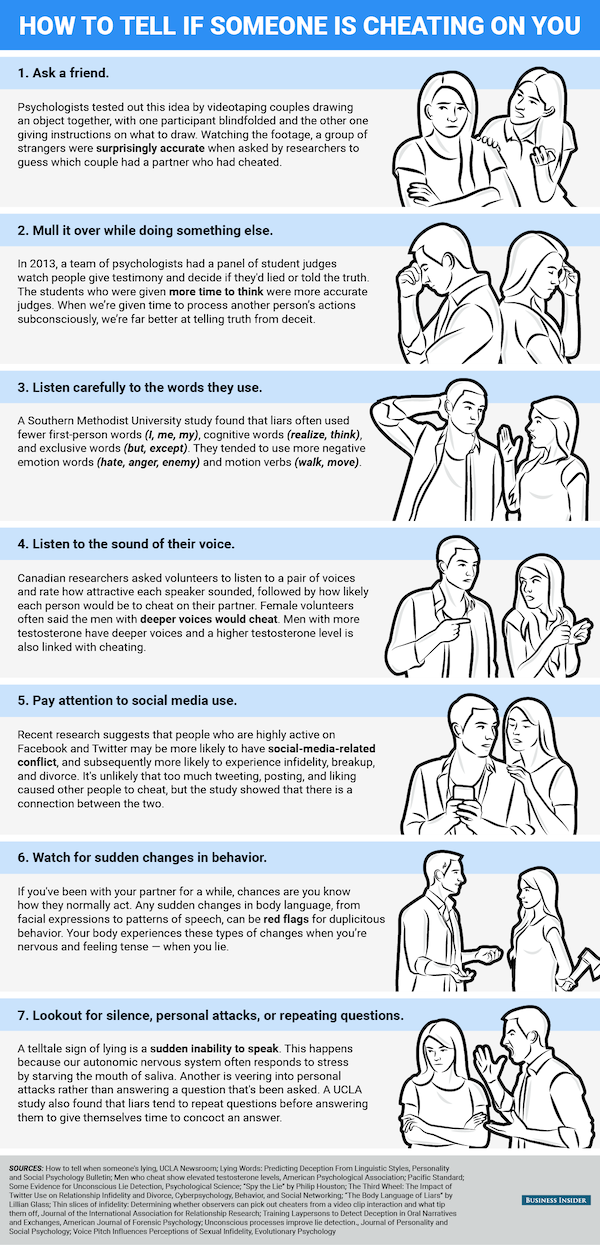 Do not overdo it, it may seem that you are trying to suppress the interlocutor. If your eye contact is too weak, you will appear insecure.
Do not overdo it, it may seem that you are trying to suppress the interlocutor. If your eye contact is too weak, you will appear insecure.
3. Assume a pose.
Assume the pose of a confident, at ease person.
4. Relax your shoulders.
When you are tense, your shoulders are also tense. They are raised and slightly lean forward. Try to relax, shake your shoulders and pull them back.
5. Nod your head when the other person is speaking.
Nodding from time to time shows that you are listening. But do not overdo it, otherwise you can become like Woody the woodpecker.
6. Do not slouch, sit straight.
Maintain good posture, but do not tense up.
7. Bend moderately.
If you want to show that you are interested in what someone is saying, lean slightly towards the speaker. If you want to show that you are confident and comfortable, lean back a little. But don't lean too low. In this way, you will give the impression of a person who is in dire need of support.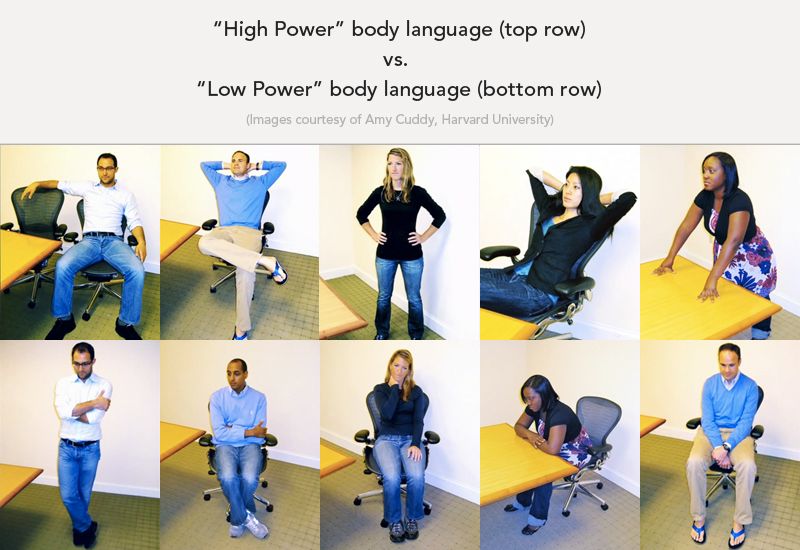 Or if you lean too far back, you may appear arrogant and too distant.
Or if you lean too far back, you may appear arrogant and too distant.
8. Smile and laugh.
Take things lightly, don't take things too seriously. Relax in moderation, and when someone says something funny, smile and laugh. People are willing to listen to you if you seem like a positive person to them. But don't be the first to laugh at your own jokes - this indicates that you are nervous and need outside support. Smile when you're introduced to someone, but don't stick that smile on your face - you'll justifiably be considered insincere.
9. Do not touch your face.
This indicates that you are nervous and will distract the attention of listeners or interlocutors.
10. Keep your head up.
A lowered head is a sign of uncertainty and loss. Your gaze must be straight.
11. Take your time.
This is done for the following reasons: when you walk slowly, you not only calm down and become more confident, but you get a little less stressed. When you address someone, don't turn in that direction too quickly, but do it as slowly as possible.
When you address someone, don't turn in that direction too quickly, but do it as slowly as possible.
12. Don't fuss.
Try to avoid nervous movements such as wiggling your leg or rapidly tapping your fingers on the table. Gradually get rid of these habits or transform them. Fussiness indicates that you are nervous, distracting your audience, and preventing you from getting your message across. Order your movements so as not to interfere with yourself. Try to relax, do everything slowly and watch your movements and gestures.
13. Gesture more confidently.
Use your hands to describe something or to make your argument sound more powerful. But do not overdo it - too much hand movement distracts the attention of the listeners. And do not repeat the same movements all the time, control them!
14. Hold the glass down.
Do not hold the drink too close to you and at chest level, so as not to look too closed and “protective”. Try to keep anything (not just drinks) below the level of your heart and at the level of your toes in the frontal plane.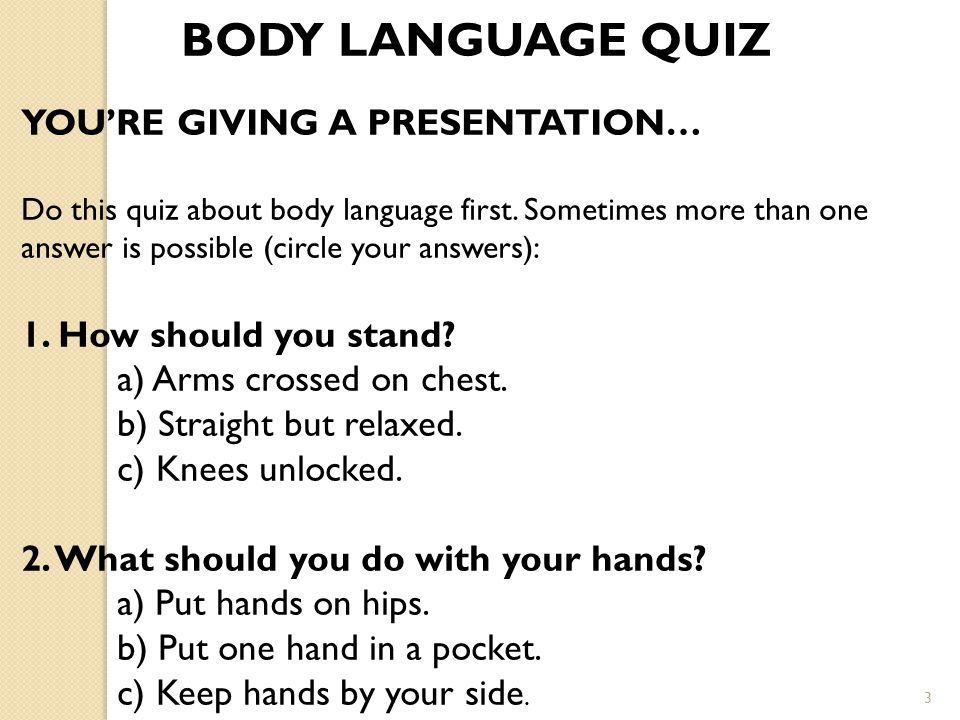
15. Keep your spine straight.
Many people could sit and stand straight and beautiful, but they think that the back ends where the neck begins, and therefore they stretch their neck forward, not realizing that this is part of their posture. Your back ends where your head begins. You need to try to keep your entire back straight and then your posture will be really good.
16. Keep your distance.
Do not stand too close. Everyone has long known that if you get too close to the interlocutor, he will begin to worry. Let people have their own space, don't try to conquer it.
17. Mirror.
Often when you have a good relationship with someone, you unconsciously become a mirror for each other when you communicate. This means that you are borrowing someone else's body language to some extent. In order to communicate better, you can consciously use the mirror effect. If the other person leans forward, you can lean forward too. If the interlocutor stretched out her hand to take something, you can do the same.